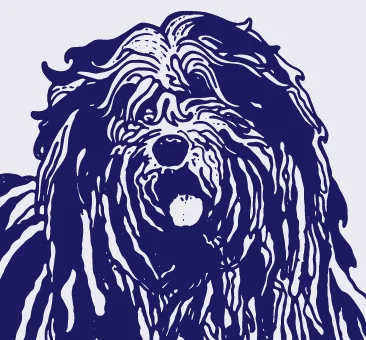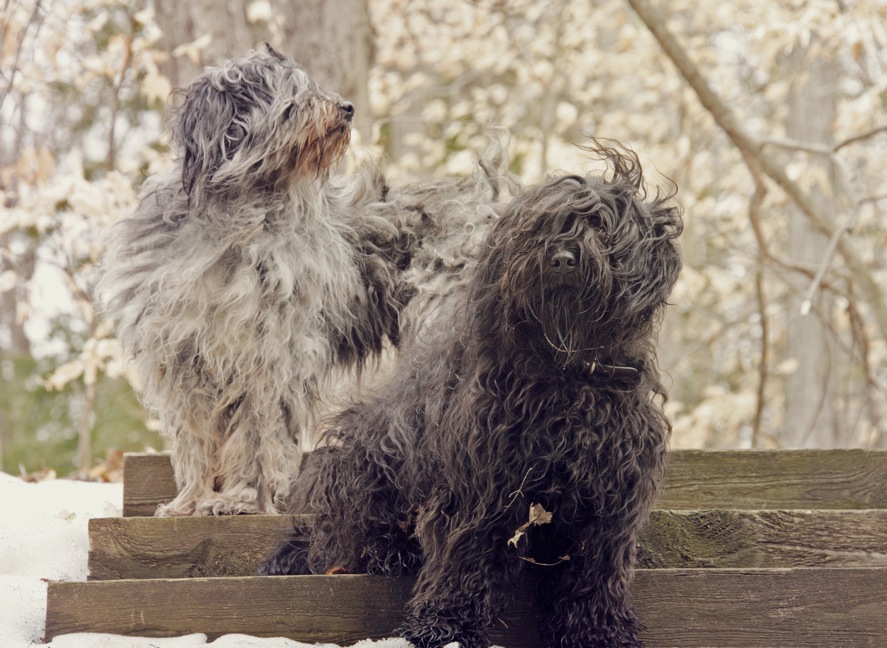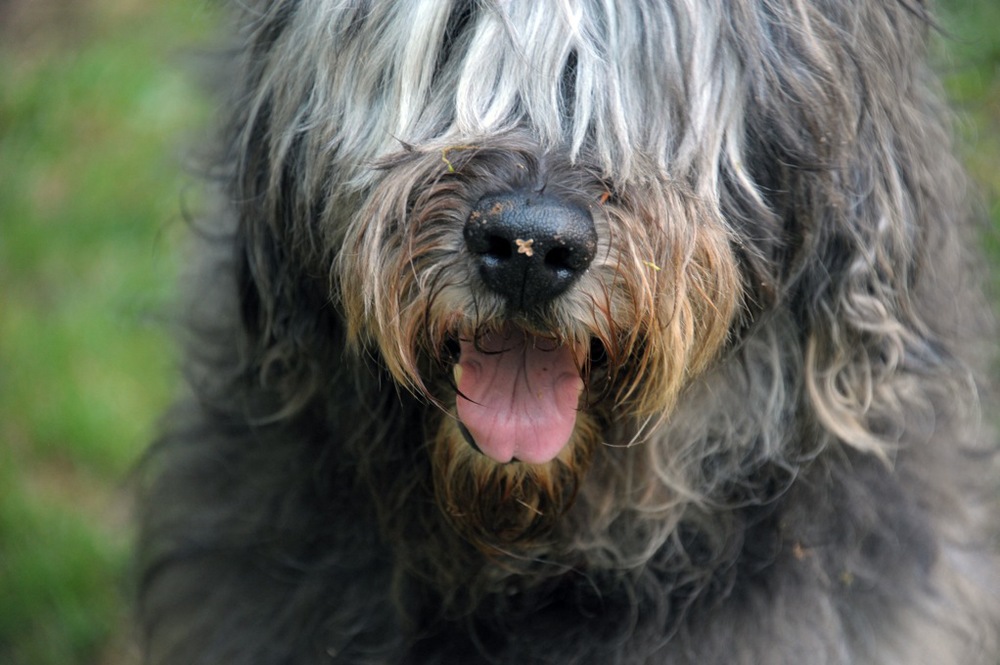The Coat
Typical of this breed is the presence of 3 types of hair: the undercoat, fine, dense and oily, adhering to the skin and forming a waterproof, protective layer; the goat hair strong and rough as in goats and which stays smooth without tufting and the woolly top coat, finer in texture and which grows together in maps.
The distribution of the various types of hair over the body is not homogeneous. In the region of the withers down to roughly half the depth of the thorax, only goat hair is present, forming a smooth saddle.
In the rear section of the trunk and on the limbs, together with the goat hair which is still present there, there is a vast amount of woolly hair from which the particular masses of hair, known as "maps" originate.
The "map" should be larger at its base, flat, irregular and sometimes opening fan-wise. This is due to the abundant presence of goat hair mixed with the woolly hair.
The Coat Color
Let us first see what the standard has to say on the subject of coat color:
Solid grey or with spots of all tones of grey from the lightest through black, also with isabella and light fawn shades (in the original standard, in Italian language: anche con sfumature isabella e fulvo chiaro.). An all black coat is allowed providing the black is really opaque. An all white coat is proscribed. White patches are tolerated as long as their surface is not more than one fifth of the total coat surface.
I have quoted this excerpt from the standard verbatim because it could lead to confusion if misinterpreted.
A point which continues to create considerable confusion in the translations to other languages is: "also with isabella and light fawn shades".
In some, also official translations, the word "shades" is ignored, so it appears that the Bergamasco can be not only grey and black but also isabella and fawn, but that is not exact.
What the standard really means, even though in somewhat ill-chosen terms, is the color assumed by the maps which consist mainly of dead hair. Under the influence of sun and water and atmospheric factors in general as well as aging of the hair, the loose hairs, which form part of the map mass, gradually change color: the grey hairs turn yellowish whilst the black ones take on a tawny hue.
This is what causes the isabella and light fawn shades visible in the coats of adult dogs. If one lifts up the maps and examines the hair at its roots, close to the skin, one can see that it is either grey or black. This is the manner to ascertain the coat color in adults. In young dogs it is easier to discern. Particularly at birth, the color quality leaves no room for doubt. If, when checking puppies, one discovers that one or more of them are of colors other than grey or black, no members of the litter can be registered in the genealogical annals since they are carriers of characteristics which are not typical of the breed.
It is unfortunately the case the recent appearance on the scene of Bergamascos with tawny-black coats. Since this coloring is not mentioned in the standard, their presence is undoubtedly due to spurious introduction of crossing with breeds in which these alleles are present.
Careful checking of adult dogs and, above all, detailed examination of puppies is essential in order to preserve the integrity of the breed.
At birth Bergamasco puppies are or black or grey with black patches. The last ones are genetically "merle". These dogs has normal pigmentation of eyes, nose, lips (heterozigote for the gene Merle).
But if tow merle are crossed, in the litter some puppies (homozigote for the gene Merle) present white patches all over the coat. One or both eyes are blue and there are pink spots on the nose tip and on the edges of the eyelids and lips. Apart from these undesirable outward signs, the hearing system is often defective. Such dogs can be partially or totally deaf and many specimens, particularly bitches, are sterile.
Obviously, breeders have to be very careful to avoid producing dogs with hereditary tares.
So the best pairing combination is a partner born black with a heterozygote in respect of the M gene, i.e. a grey with black patches. This pairing will result in a litter in which 50% of the puppies are black and 50% grey with black markings.
As these puppies grow up, the grey ones with black markings remain the same color as at birth with little variation in the grade of grey, whilst the black markings can either remain unchanged or tend towards grey.
The dogs which are born black, only a few retain this color whilst others will gradually greying due to the grow among the black hairs of grey or white ones. The presence of hairs in such a variety of tones creates an overall coat color in all grades of grey from darkest to lightest.






